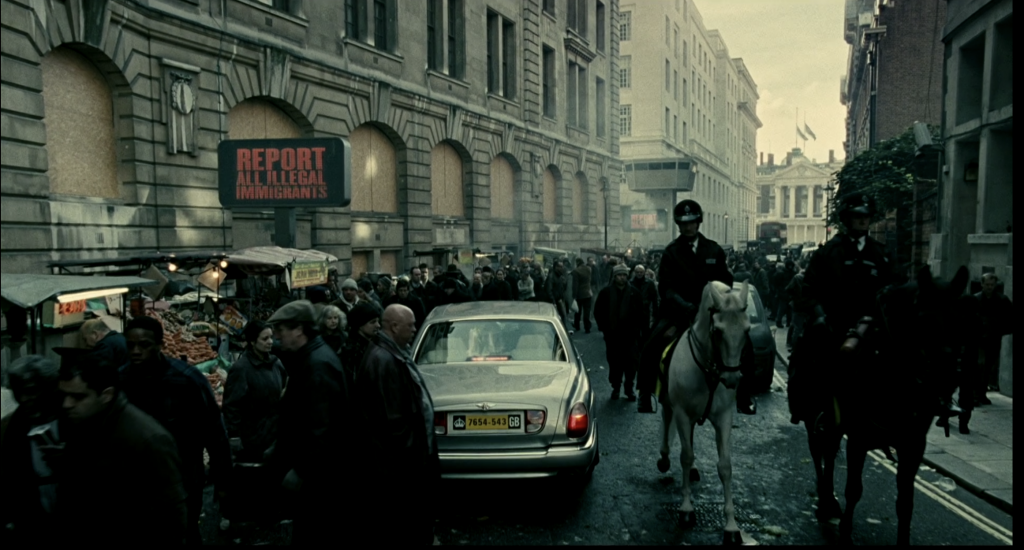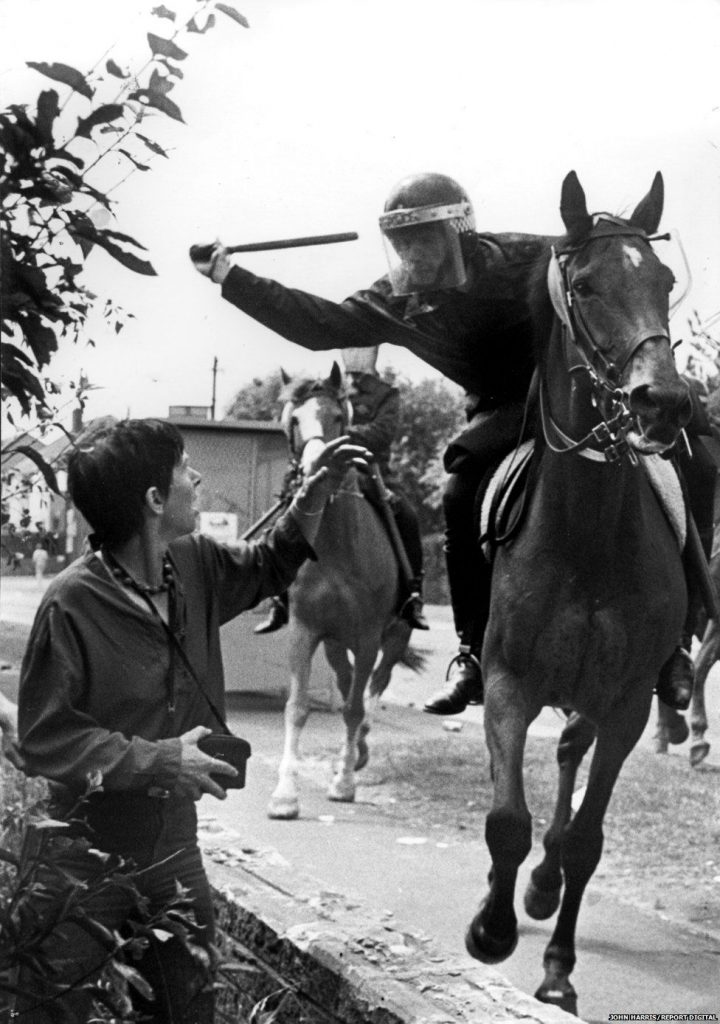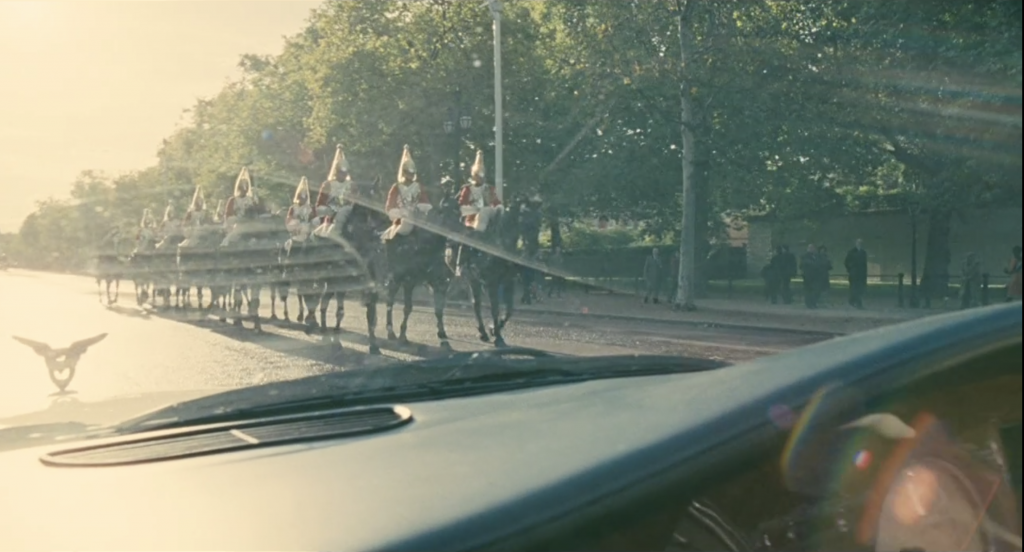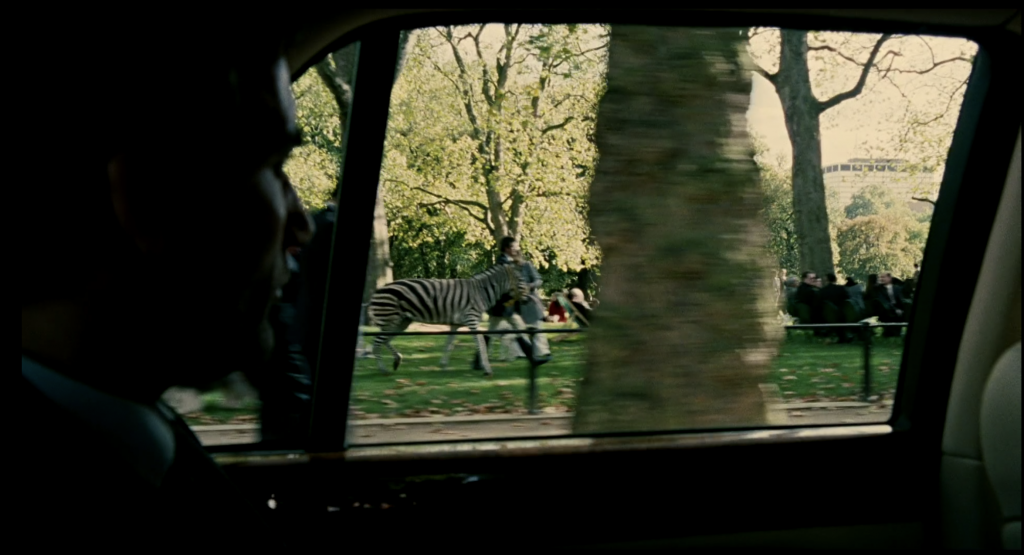Children of Men is a 2006 film directed by Alfonso Cuarón set in Britain in which the people have become infertile. This infertility has caused the collapse of most countries apart from Britain, which has embraced far-right ideology. The chosen scene, from early on in the film, shows Theo (Clive Owen) on his way to the ‘Ark of Arts’, a cultural conservation organisation that his cousin runs. Animals are peppered throughout the backgrounds of the shots of this sequence and are used primarily as symbols of status, power, authority and wealth. They are used to reinforce state authority as symbols of strength and unquestionable authority.

The sequence opens with a wide-angle shot of a car that Theo travels in, driving through a crowded street (Figure 1). Cuarón’s use of the wide-angle allows every element of this shot to come through. Walking towards the camera are two police officers on horseback. They are parading through the crowd of people, parting them, suggesting their authority, reminiscent of images from the Battle of Orgreave 1984 (Figure 2). The horses are much taller than the crowds of people creating a power dynamic of inequality. Interestingly, the camera in this shot is placed at around the height of the police officers on the horses; thus we the audience have become figures of authority and power. These horses are shown to be tools of the state, a state that is unequal and authoritarian. The horses on the right-hand side of the frame are mirrored by a government propaganda sign that states “REPORT ALL ILLEGAL IMMIGRANTS”. The message of this shot couldn’t be clearer: whilst animals have become tools of the state, and thus awarded some power, ‘illegal’ humans are being persecuted.

Two shots later on, after following the car driving through London, there is a medium shot placed inside the car (Figure 3). The camera then tracks several well-dressed guards on horseback as they ride down The Mall. All these horses are black creating a homogenous monolith of power and wealth. Again, horses are used as tools of authority and majesty. Cuaron’s placement of animals implies a monopoly that the wealthy classes have on animals. This time, as opposed to being on the same level of the horses (as was the case with the police horses) the camera is placed such that we are looking out and up to the riders on horseback placing us at the mercy of their power. Perhaps Cuaron is making these shifts of position to indicate that even within the animal world there are hierarchical concepts; the horses riding down The Mall are more important and powerful than the ones used by police earlier in the sequence.

The camera then cuts to show the other side of the royal mile through the car window (Figure 4). Theo’s head is in the foreground as the camera looks past him. In very short glimpses, Cuaron adds to the sense of extravagance and wealth that animals represent in this film. Shown walking past is a zebra led by a handler. These images are reminiscent of Victorian London in which there was a fascination with exotic animals. Exotic animals represent wealth and thus the power that comes with wealth. Perhaps Cuaron is commenting on the absurdity of this elite and their strict anti-immigration policies as the zebra is so very out of place on The Mall; itself an immigrant. Yet again, the audience are shown a world in which animals (and more broadly nature) are property of the wealthy and powerful; symbols of status and power.
